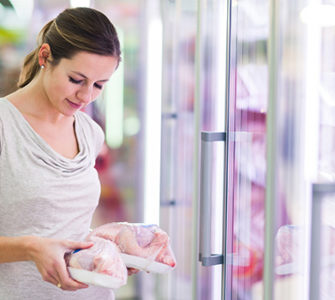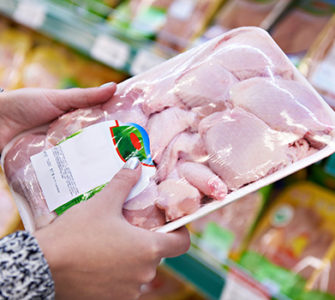Survey shows US poultry industry’s evolving yet flexible approach to coccidiosis management
More than half of the broilers produced in the US in 2021 were vaccinated as part of a total control regimen for coccidiosis — a ubiquitous parasitic disease of poultry that can reduce growth rate and feed conversion.
Traditional feed medications for coccidiosis are still used extensively for managing coccidiosis, either as part of a planned rotation program or as a supplement to vaccines in a bioshuttle regimen, where anticoccidials are fed to vaccinated birds after the vaccine has had its initial impact.
But after years of being an afterthought in many broiler-production schemes, coccidiosis vaccines have become the cornerstone for many control programs, particularly in summer months, when increased ventilation reduces coccidiosis pressure and makes vaccines more manageable.
The increase in vaccine usage reflects the US poultry industry’s shift to “no antibiotics ever” (NAE) production. In 2021, nearly six in 10 broilers (59%) were produced without antibiotics — a figure that sat at 3% just 7 years ago (Figure 1).
Spike in vaccination
“Coccidiosis vaccine usage has increased in the last decade, and in 2021 we saw a 6-percentage point increase in vaccine rates, with 55% of broilers placed vaccinated against coccidiosis,” reported Greg Rennier PhD, president of Rennier Associates, a firm that tracks poultry health trends, told Poultry Health Today.
In 2013, coccidiosis vaccines were used in only 18% of US broilers. Over the past 2 years, Rennier added, some poultry producers have vaccinated broilers twice for coccidiosis.
“Double vaccination is a strategy to improve coverage as some broilers are not exposed to a single vaccination via a spray cabinet, whereas feed products have nearly universal uptake,” he explained. “It only takes a few sick birds to start a problem in a closed house.”
Vaccines can’t do it alone, however. Non-antibiotic anticoccidials — medications such as nicarbazin and zoalene, to name a few — are frequently used to manage coccidiosis in both conventional and NAE programs or to supplement vaccines, which have been known to deliver inconsistent performance in some flocks due to current administration methods.
Eubiotics — products such as botanicals and essential acids, which are thought to provide a healthy balance of the microflora in the gastrointestinal tract — have also been used to supplement vaccine and medication programs.
Antibiotics still in play
Nevertheless, there are still many US production systems that rely on ionophores — a class of animal-only antibiotics that includes lasalocid, monensin, narasin and salinomycin.
Rennier noted that while ionophores are classified as antibiotics by the US Food and Drug Administration, the World Health Organization approves their use for managing coccidiosis because they have no impact on human health. Some US poultry companies have made it policy to limit their antibiotic usage to “ionophores only.”
According to Rennier, the “ionophores only” flocks accounted for 18% of US production in 2021 — down from 22% the previous year but still up from 15% in 2019 as producers try to find the right mix of anticoccidial medications.
While antibiotic usage has declined in US poultry production, Rennier noted that 21% of US broilers were on what he calls “reduced-use” programs, which means birds received antibiotics considered by FDA to be non-medically important for humans, such as avilamycin, bacitracin and bambermycin.
Over the same period, Rennier reported, only 2% of broilers were produced using “full-spectrum” programs — those that allow the use of all FDA-approved antibiotics deemed important to human medicine. That was down from 45% of broilers in 2014.
What’s ahead
Looking ahead, Rennier said vaccine use could increase further as integrators rest feed medications and maintain their efficacy. “A coccidiosis vaccine has appeal as it allows flexibility in feed programs,” he added.
Nevertheless, Rennier said he expects the percentage of birds reared in NAE systems to hold steady — partly because many integrators still employ rotation or shuttle programs with ionophores, which do not fit with NAE production.
“The amount of shuttling has stayed about the same, with about two-thirds of people settling into shuttling some type of anticoccidial with a coccidiosis vaccine,” he said.
“What really matters when you shuttle with a vaccine is, if you start out with an NAE program, are you going to keep it that way?” he said, noting that health and welfare concerns sometimes dictate a shift to antibiotics.
The rise of eubiotics remained steady in 2021, a sign that producers had “got into a groove” and felt comfortable using them, Rennier said.
“I had thought when feed prices went up, integrators might move away from eubiotics, but it didn’t happen,” he added. “Many integrators have worked them into their rotations and see a value of them at current pricing levels, in spite of higher feed costs.”
Mortality challenges
When it comes to challenges producers are facing, early mortality topped the survey respondents’ list for 2021 — just 1 year after the issue first appeared among the top-five issues of concern.
“Respondents talked about breed-related issues, but they also mentioned issues with switching to NAE systems,” Rennier said. “Some said they can’t find the magic bullet since they stopped using an antibiotic.”
Another concern related to early mortality was the age of hatcheries. “Older hatcheries face cleaning hurdles making them less than ideal for NAE programs,” he added.
“Other key challenges among the top five were coccidiosis and enteritis, further strengthening the industry’s focus on NAE-related issues.”
Infectious bronchitis virus also appeared in the top five for the first time since 2013, with producers noting challenges with the 1639 strain of the virus.
Posted on June 13, 2022


















